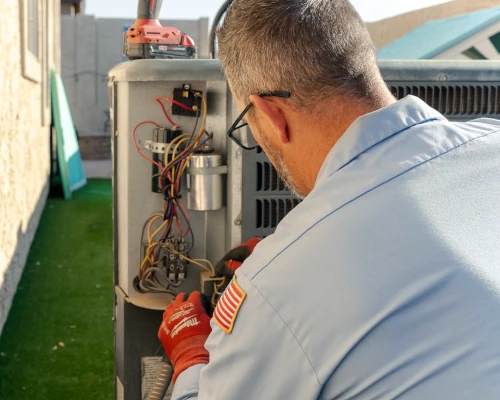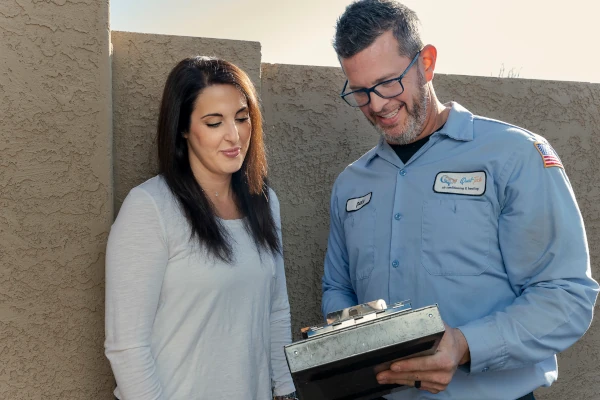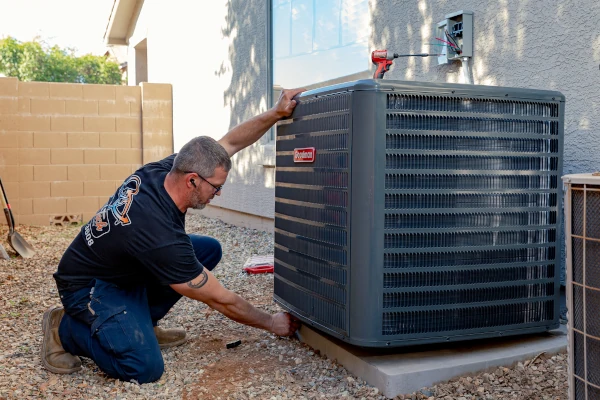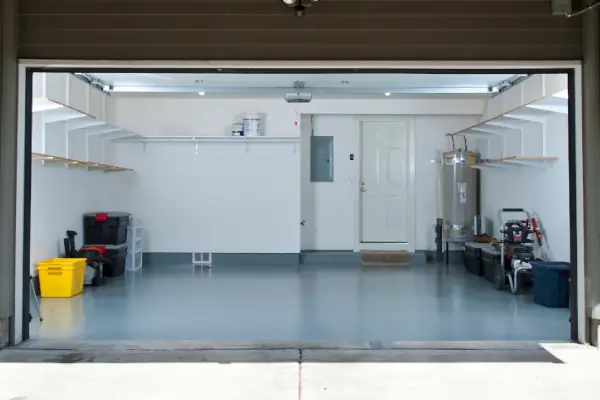If some rooms in your home are always too hot or too cold, your HVAC system may be working harder than it needs to. Traditional systems treat your entire house as one uniform space, even though different rooms have different heating and cooling needs. HVAC zoning solves this problem by dividing your home into separate areas, or “zones,” each with its own thermostat and controlled airflow.
In this post, we’ll break down how HVAC zoning works, where it makes sense, and what to consider before installing it.
What is HVAC Zoning?
HVAC zoning is a system that allows you to divide your home into separate temperature-controlled areas, or “zones,” each managed by its own thermostat. Instead of treating your entire house as a single variable. Zoning gives you control over individual rooms or groups of rooms as a “zone”. This is especially helpful in multi-story homes, spaces with uneven sun exposure, or households where family members have different temperature preferences. The components used to create these “zones” are as follows.

Thermostats
Each zone has its own thermostat, which allows for independent temperature control. These thermostats send signals to the central control panel to indicate when heating or cooling is needed in that particular area. In smart zoning systems, you can also manage these thermostats remotely using a mobile app or voice assistant.
Motorized Dampers
Installed inside your ductwork, dampers are like valves that open and close to regulate airflow. When a zone doesn’t need heating or cooling, its damper remains closed. This directs air only to the zones where it’s needed, increasing both comfort and efficiency.
The Control Panel
This is the brain of the system. It receives input from each thermostat and controls the dampers accordingly. The panel ensures that all zones operate smoothly and that the HVAC unit runs efficiently.
What Are Some Of The Benefits of AC Zoning?
Energy Efficiency
One of the biggest advantages of HVAC zoning is reduced energy waste. Instead of heating or cooling your entire home, zoning allows you to direct air only to the areas in use. This targeted approach can significantly lower your energy consumption, especially in larger homes or buildings with underused spaces like guest rooms or basements.
Personalized Comfort
With separate thermostats in each zone, everyone can set their own preferred temperature. No more battling over the thermostat—someone upstairs can stay cool while someone downstairs stays warm. This is ideal for families with varying comfort preferences or for managing hot and cold spots in the home.


Lower Utility Costs
By using less energy, HVAC zoning can help reduce monthly utility bills. While there may be an upfront cost for installation, many homeowners find that the savings over time help offset the investment.
Reduced Wear and Tear
What Are Some Drawbacks of AC Zoning?
Initial Cost
While HVAC zoning offers many benefits, there are some potential drawbacks to consider. One of the biggest concerns is the initial cost. Installing a zoning system—especially in an existing home—can be expensive. It requires multiple thermostats, dampers, a control panel, and sometimes ductwork modifications. For homeowners on a tight budget, the upfront investment may be a barrier.
Installation Complexity
Another factor is installation complexity. In new construction, zoning can be planned from the beginning. But retrofitting an older home may be more complicated, depending on your current duct layout and HVAC system. Improper installation can lead to system inefficiencies or mechanical issues, so it’s essential to work with experienced HVAC professionals.
Maintenance Requirements
Lastly, maintenance and repairs can be slightly more involved. With more components, such as dampers and zone controls, there are more parts that may eventually require servicing. While not frequent, if issues do arise, diagnosing and fixing a zoning system can take longer and cost more than standard HVAC setups.
What Are The Ideal Cases for AC Zoning?
HVAC zoning isn’t necessary for every home, but it can be especially valuable in certain situations where standard systems fall short. If your home has inconsistent temperatures or specific use patterns, zoning may provide significant comfort and efficiency improvements.
Ideal situations for HVAC zoning include:
Multi-story homes: Upper floors often get hotter, while basements stay cooler. Zoning helps balance these differences.
Large homes or open floor plans: You can control only the spaces in use, rather than the entire home.
Rooms with high sun exposure or large windows: These areas tend to heat up quickly and may need different temperature settings.
Guest rooms or rarely used areas: Avoid wasting energy by reducing airflow to unused spaces.
Families with different comfort preferences: Each zone can be set independently, so everyone stays comfortable.
HVAC zoning offers a smart solution for homeowners looking to improve comfort and efficiency. By dividing your home into separate zones, you gain greater control over how and where energy is used—helping to reduce utility bills and avoid hot or cold spots. While installation may involve a higher upfront cost, the long-term benefits often outweigh the investment, especially in larger or multi-story homes.
If you’re dealing with uneven temperatures or want more control over your indoor environment, zoning may be the right upgrade. Contact a qualified HVAC professional to evaluate your home and discuss whether zoning is a good fit.





